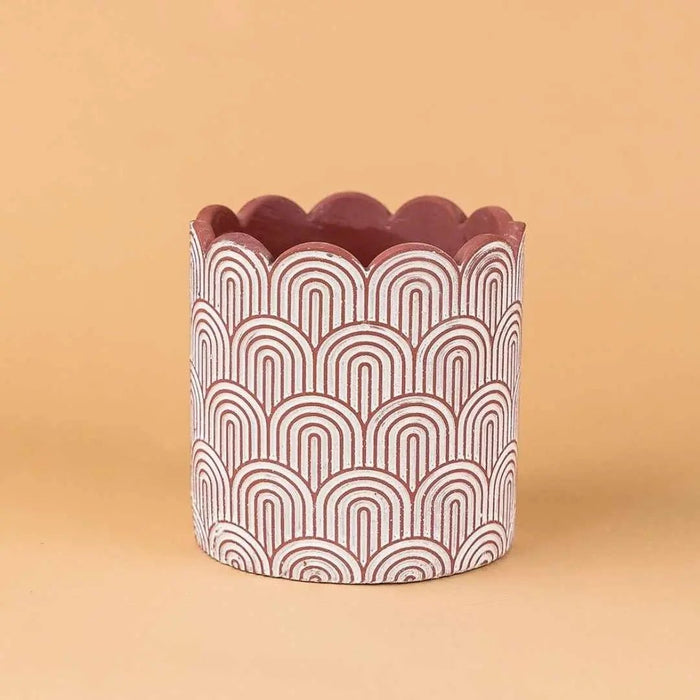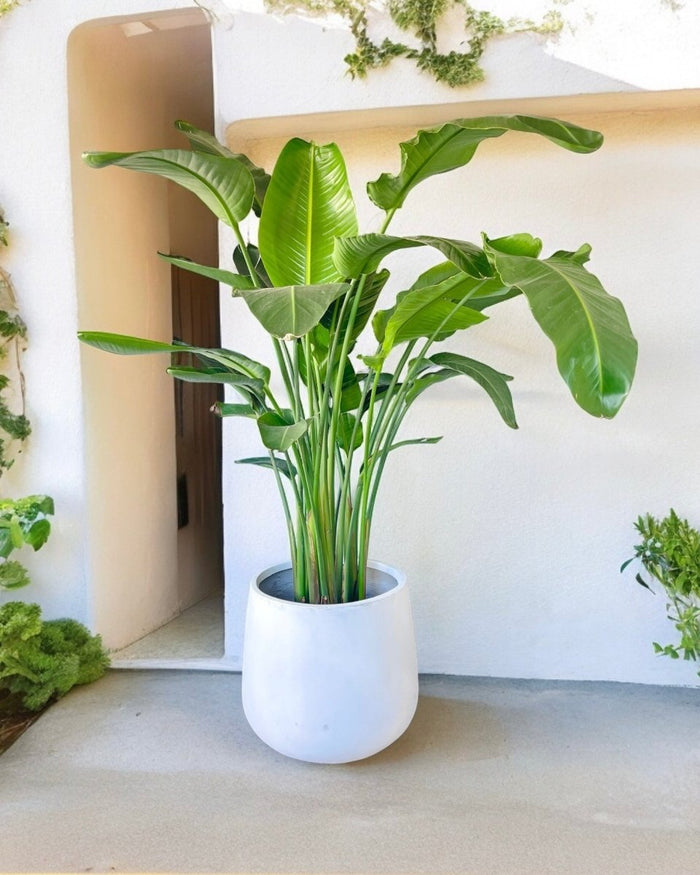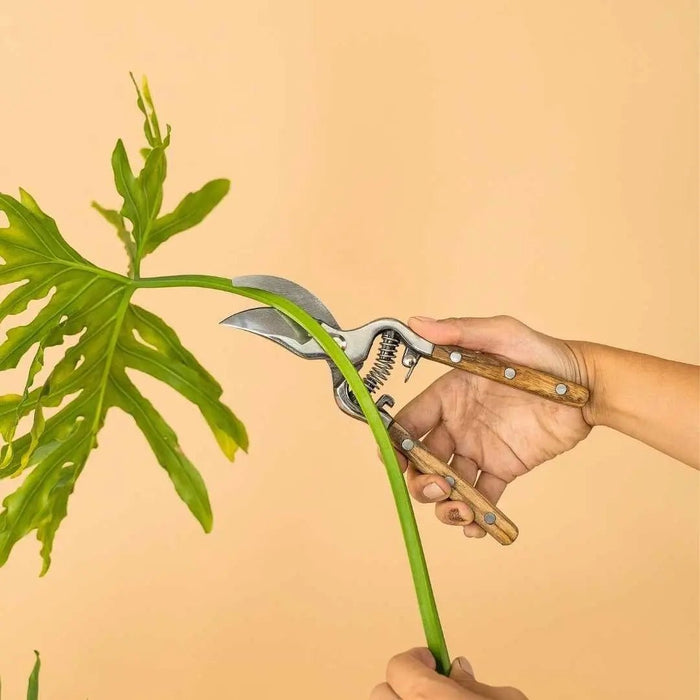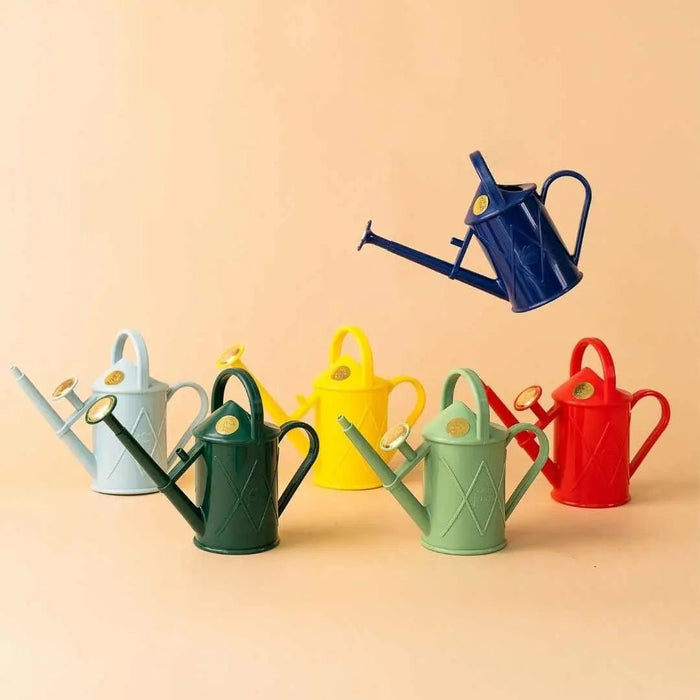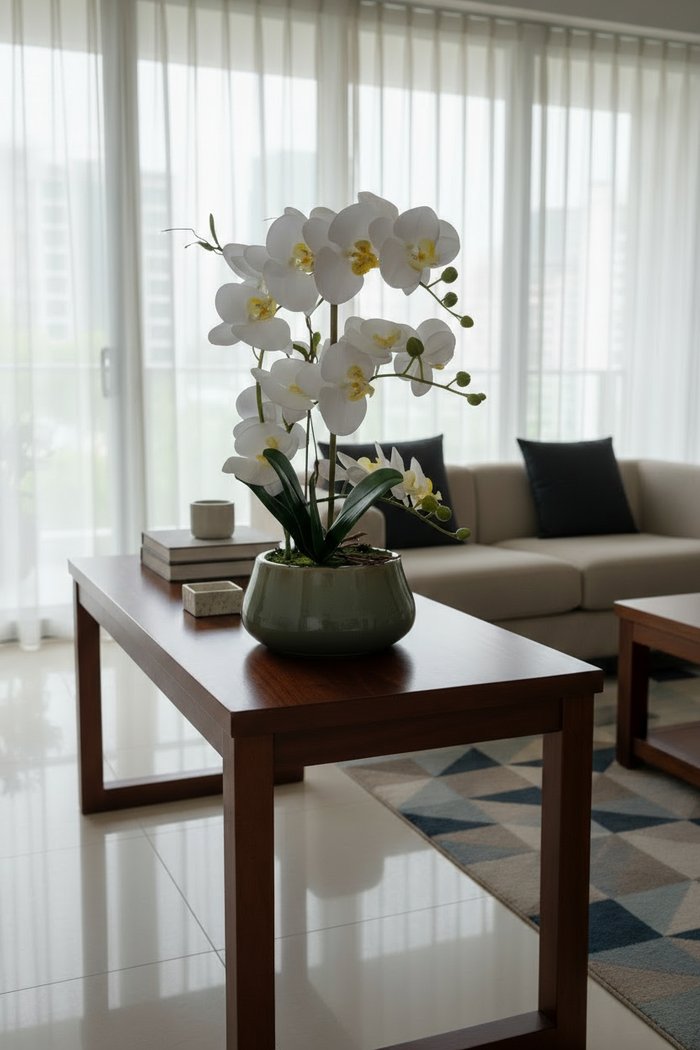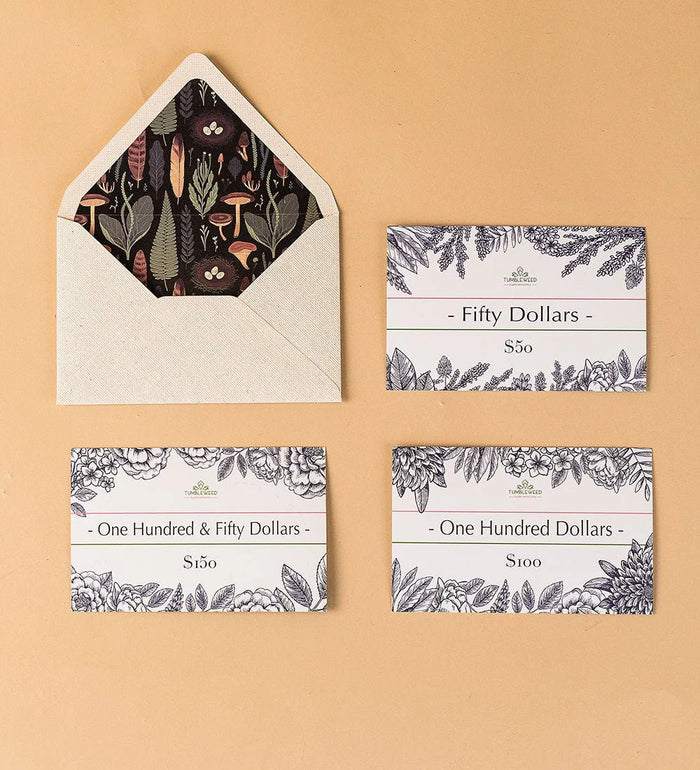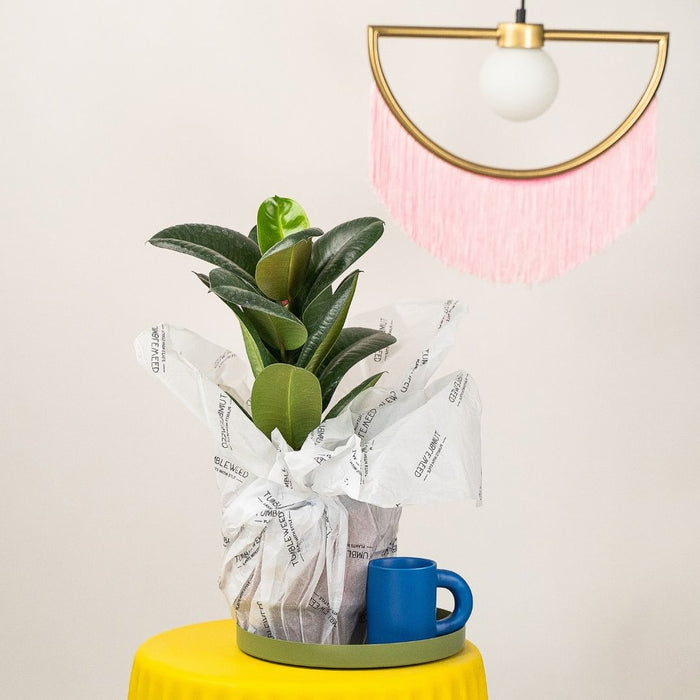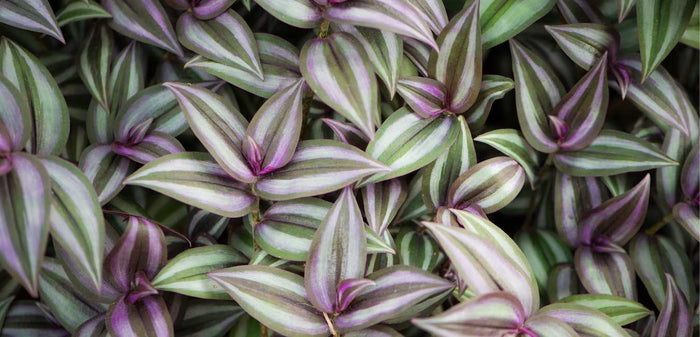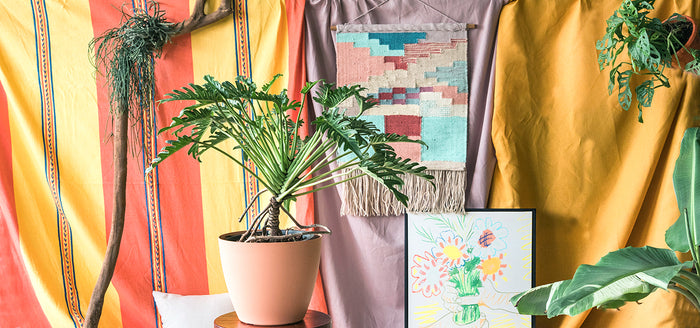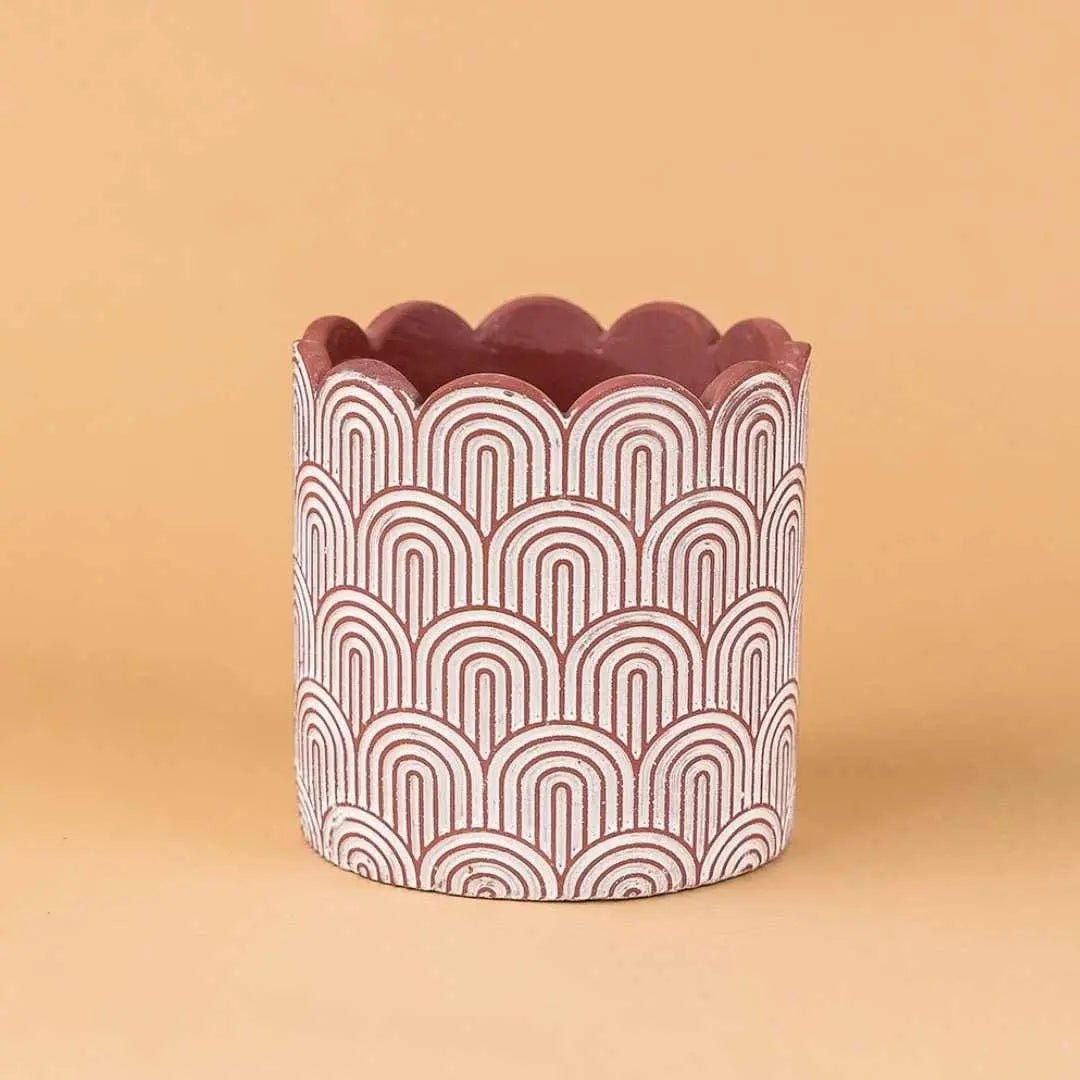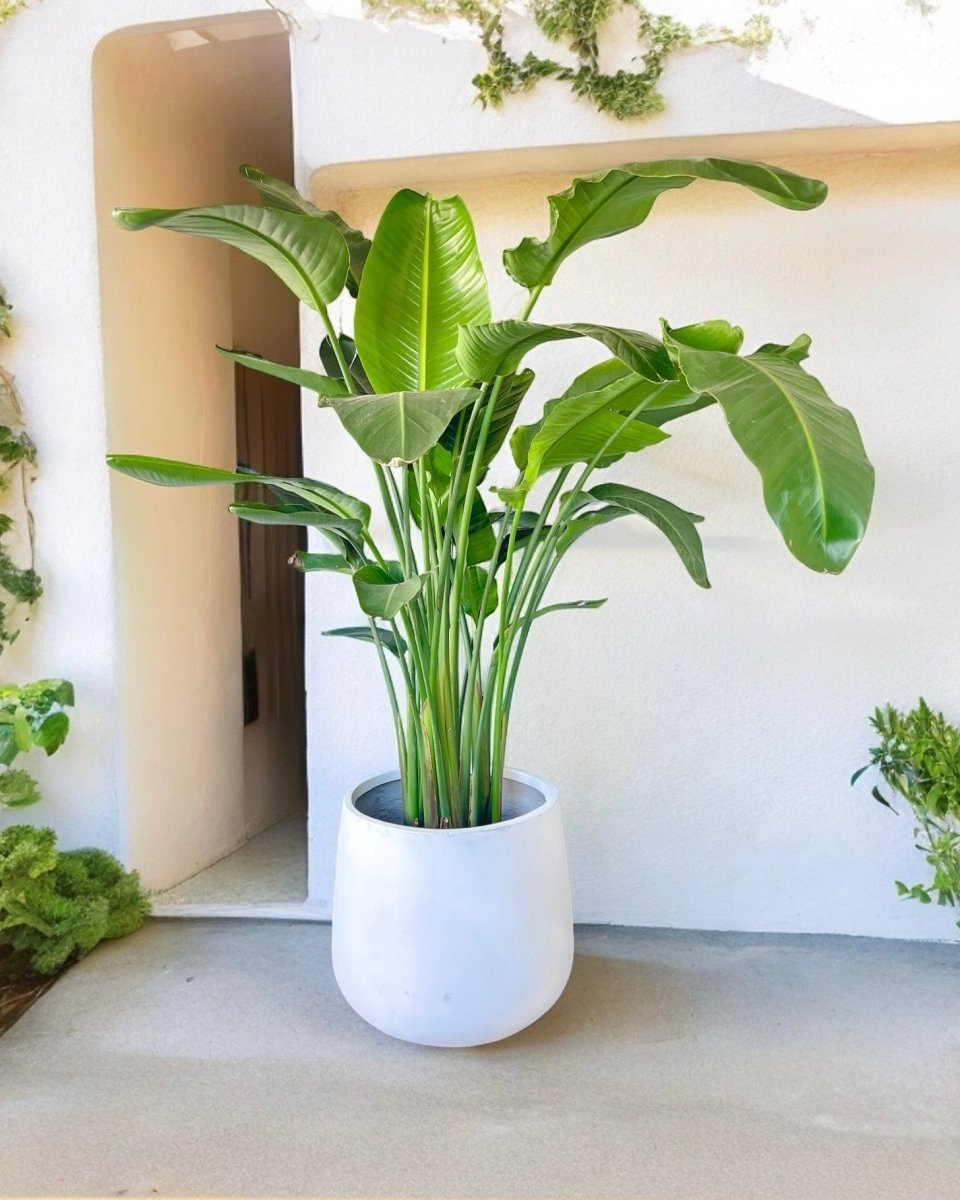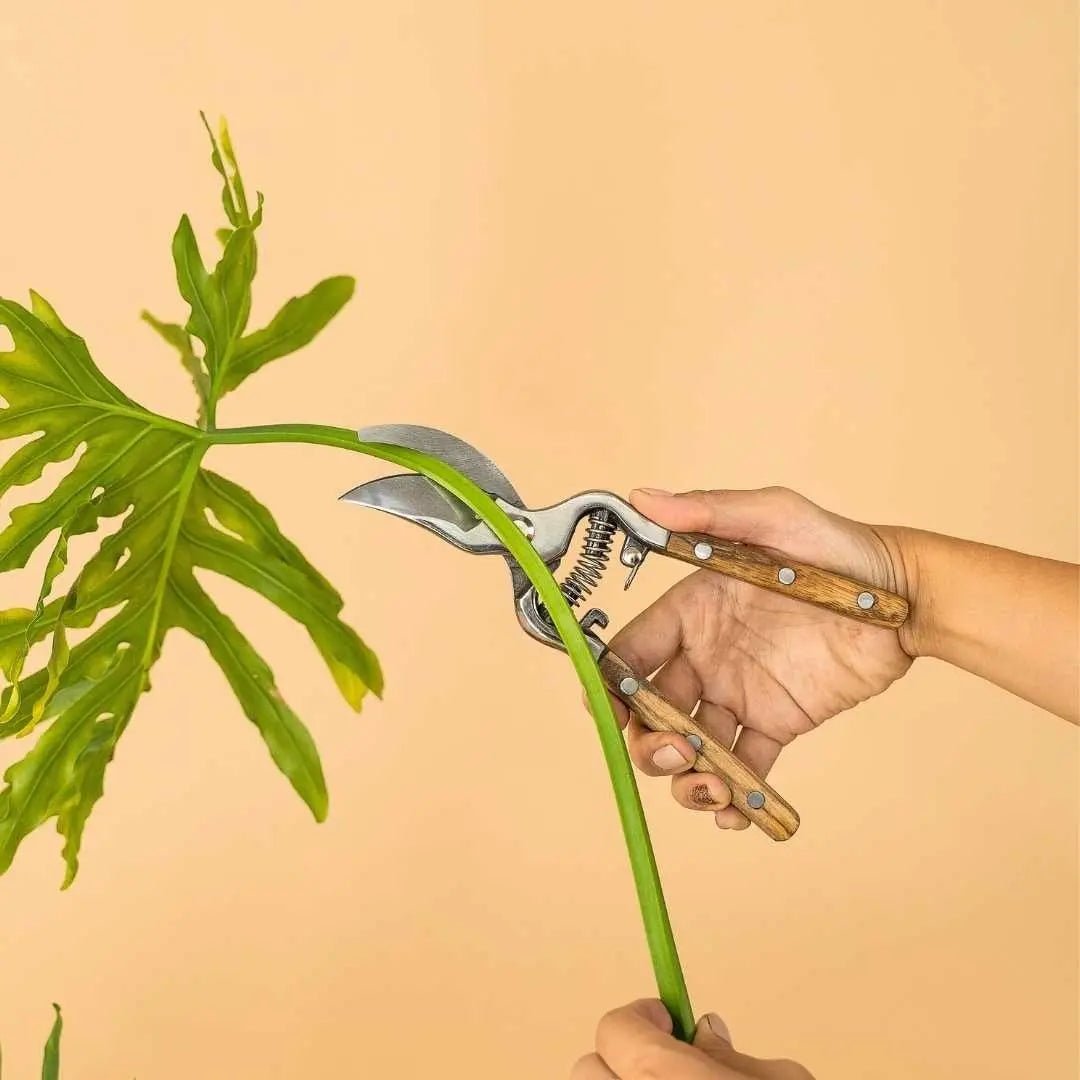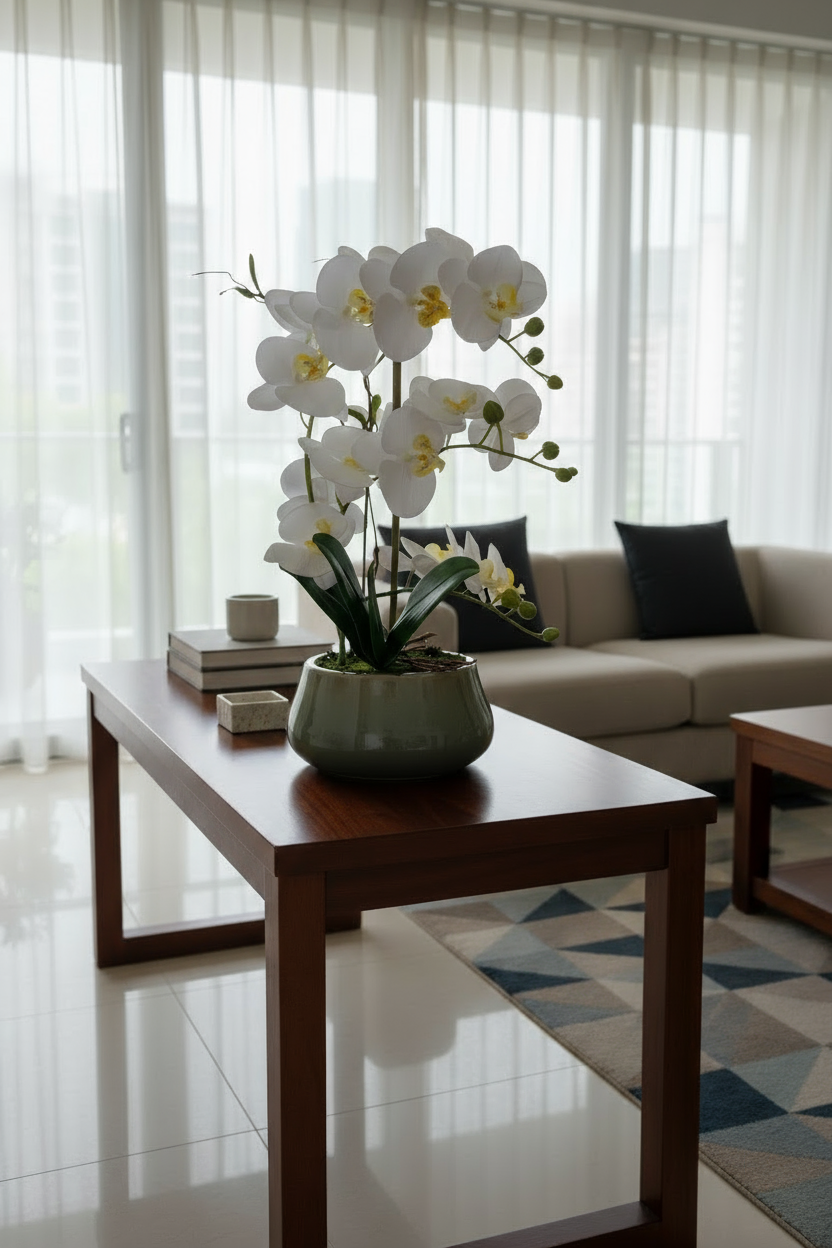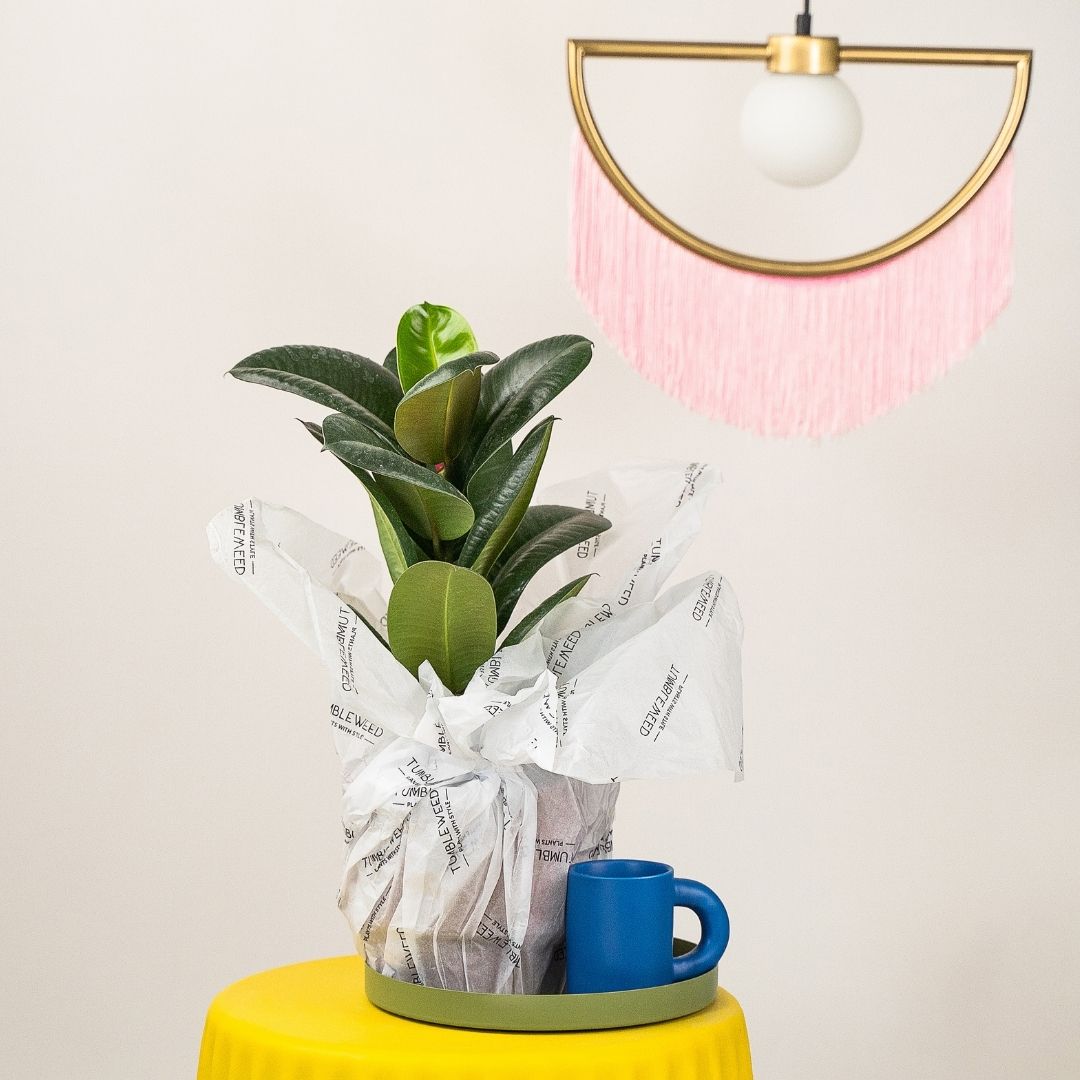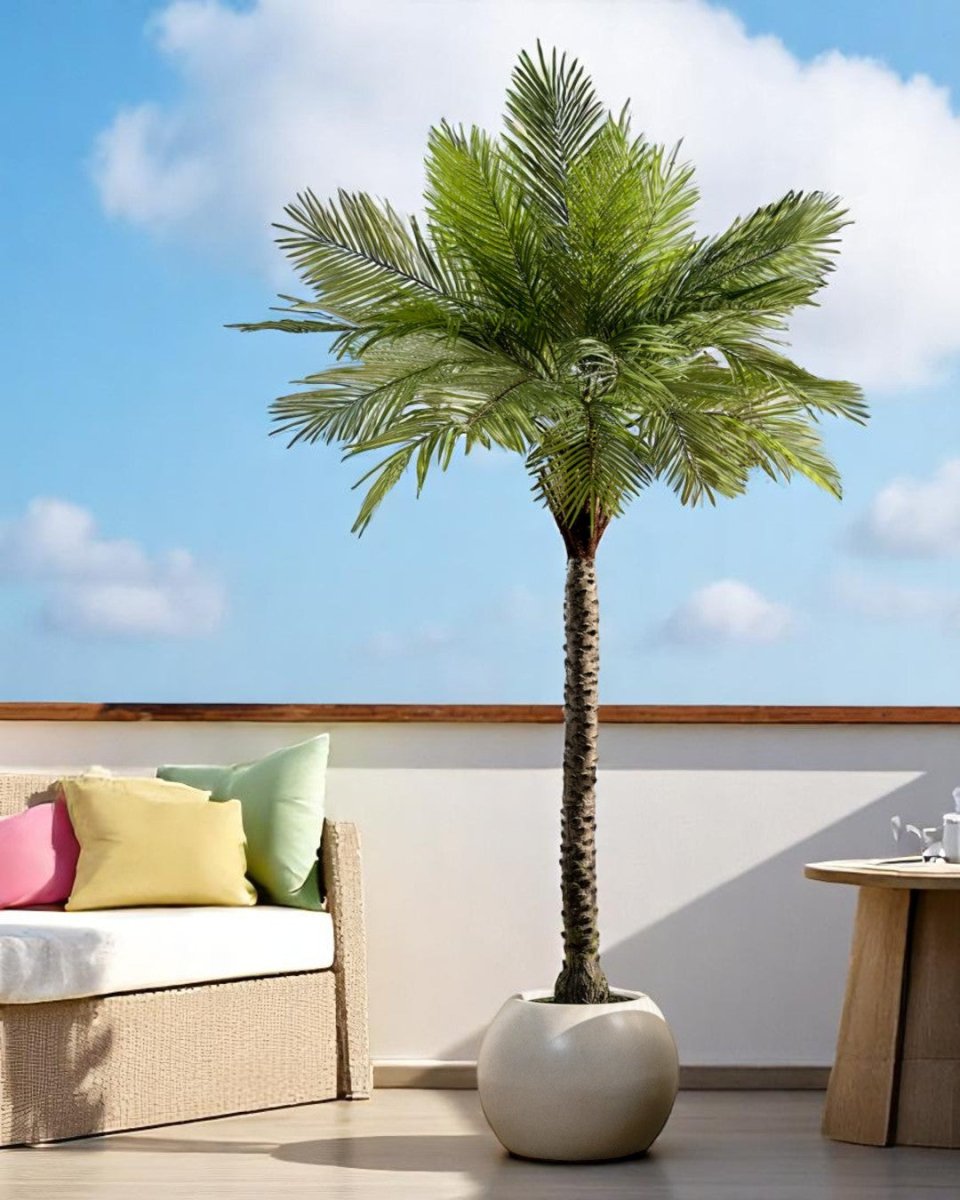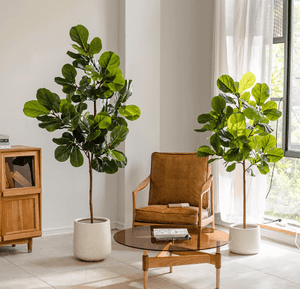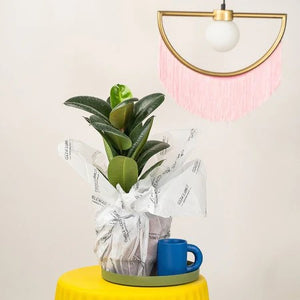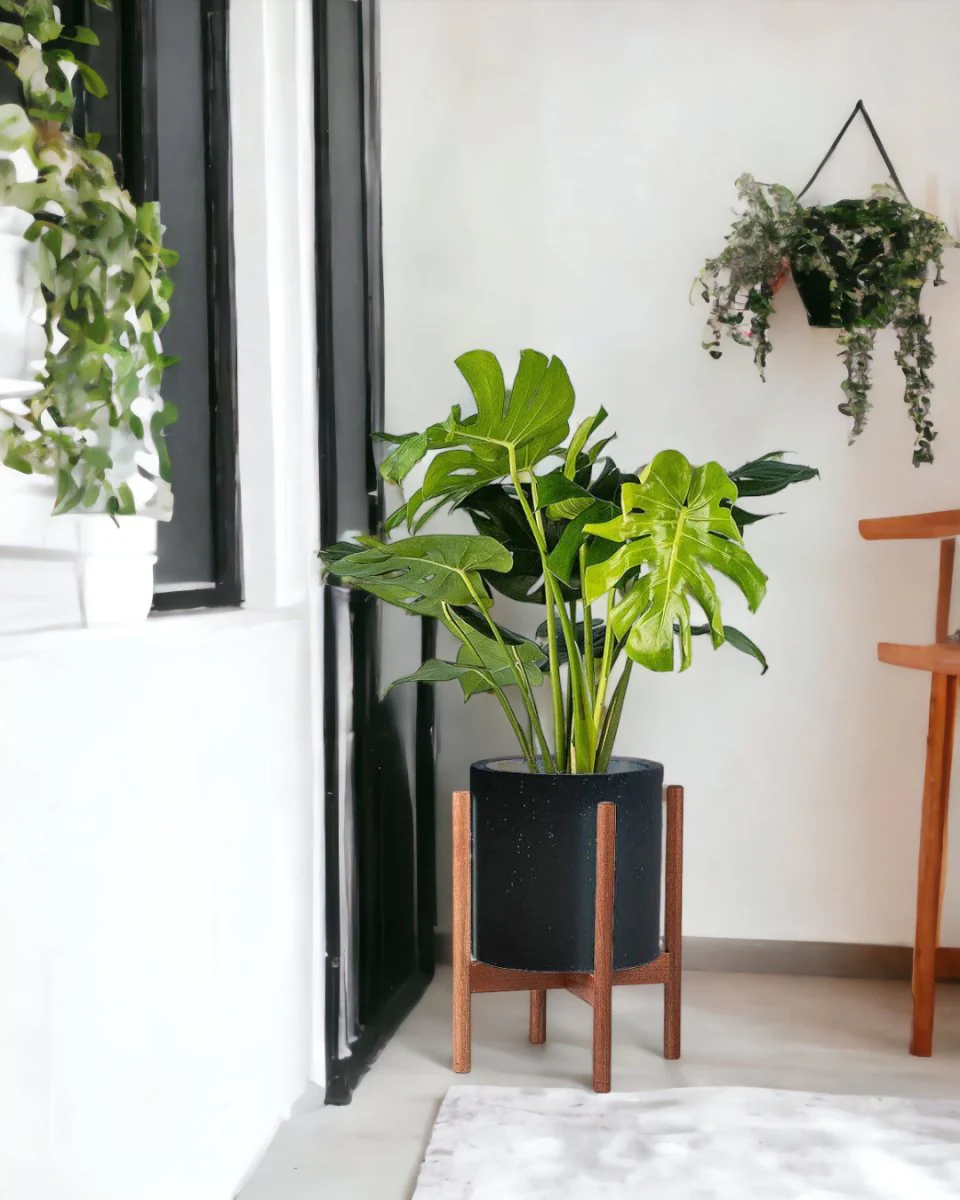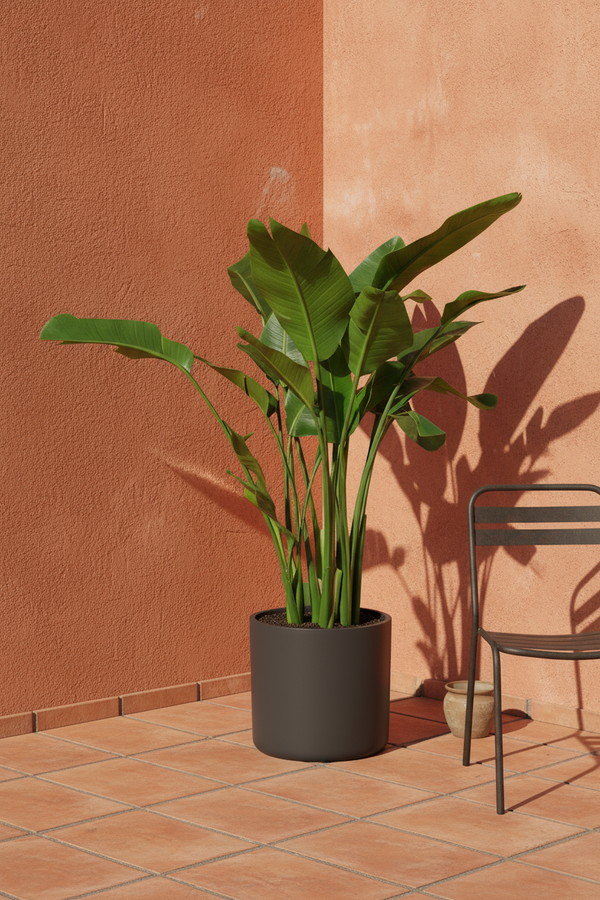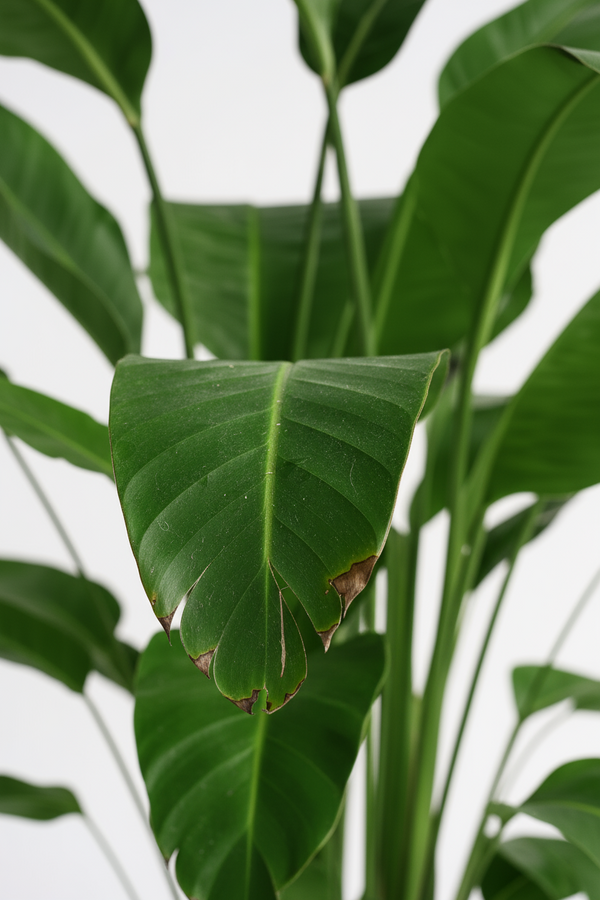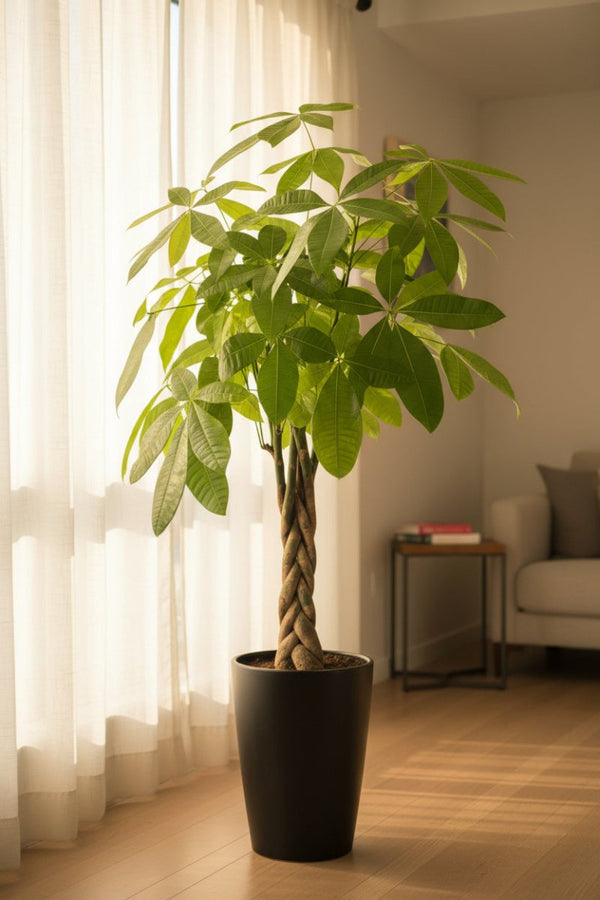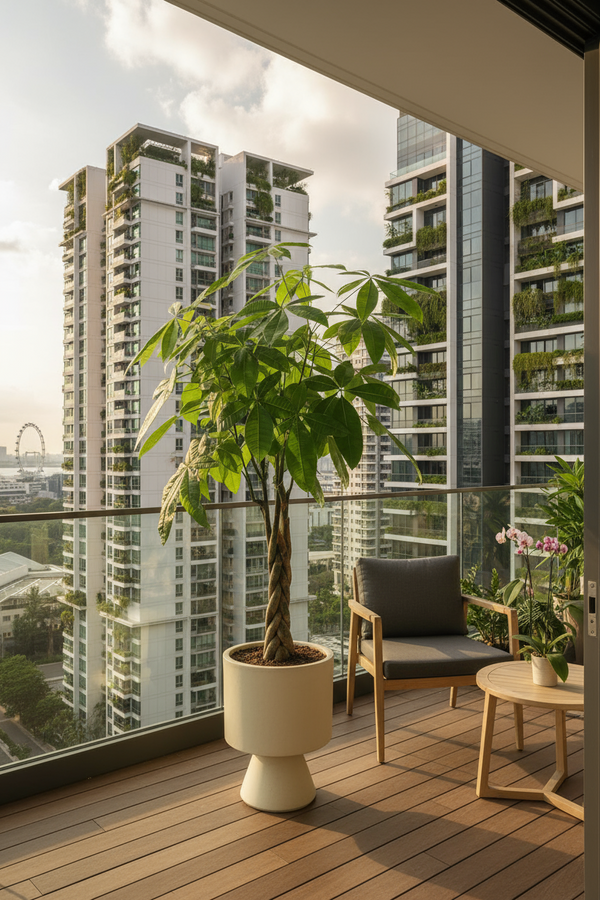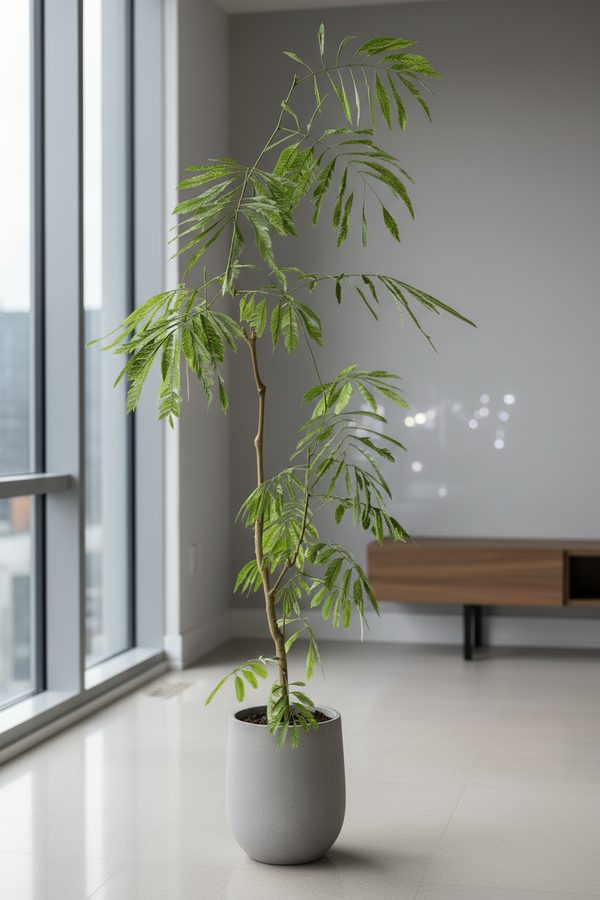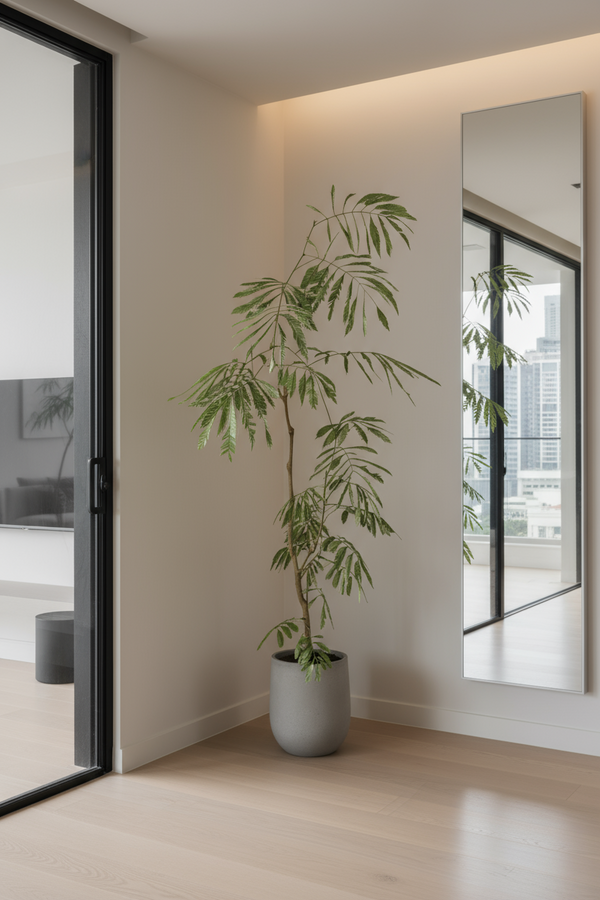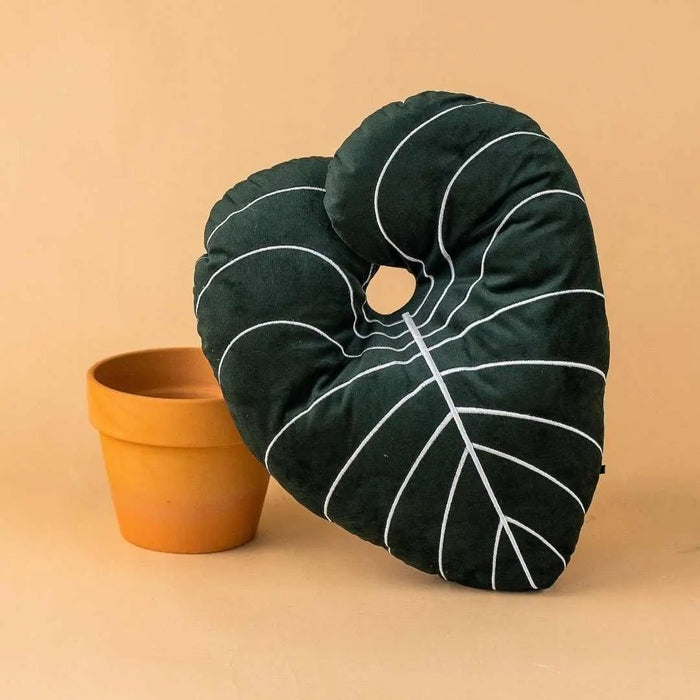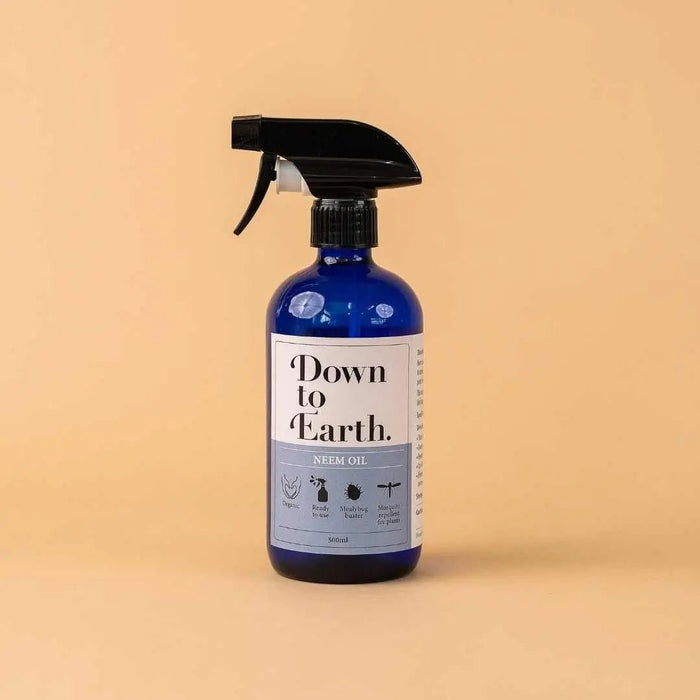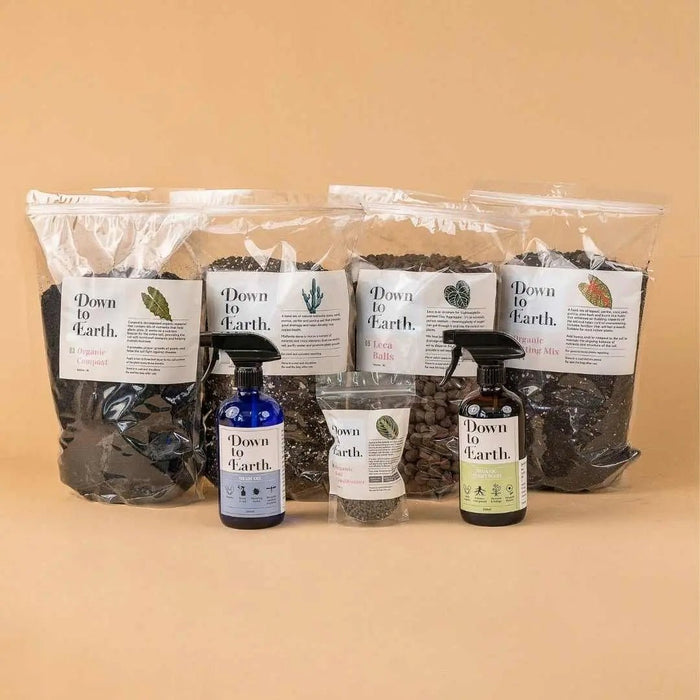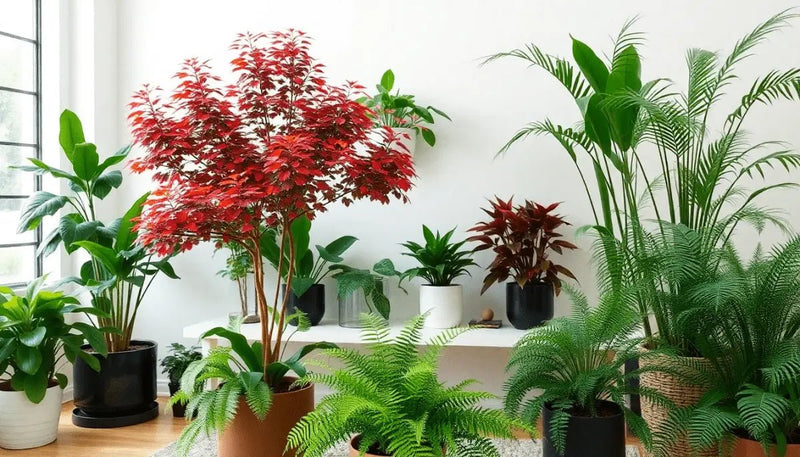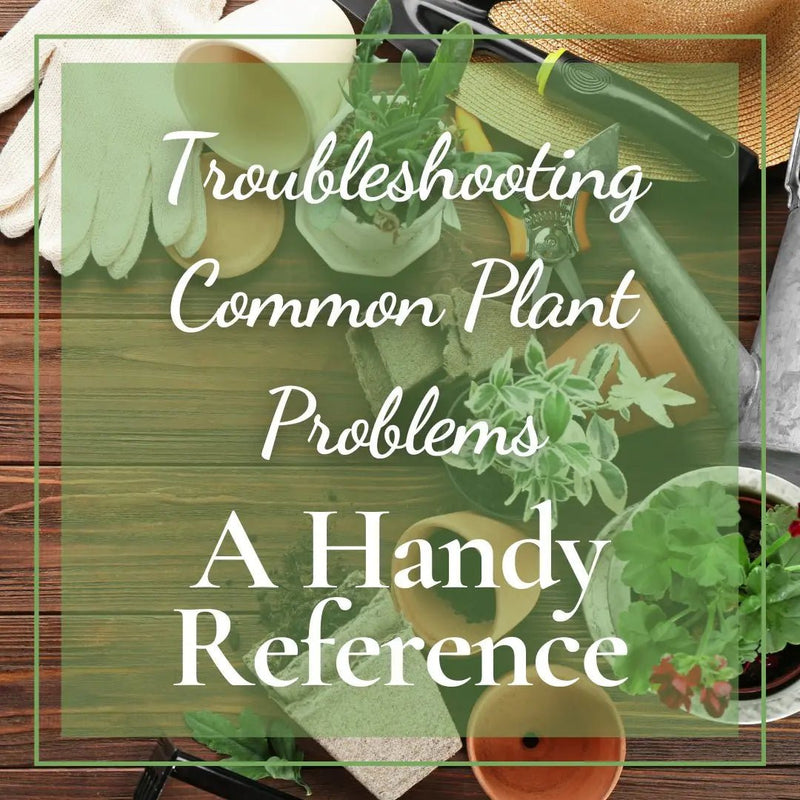Top 5 XL Plants Perfect for Your Balcony Setup
Posted on April 15 2025
Why Choose XL Plants for Your Balcony: Benefits and Considerations
When selecting plants for your balcony setup, considering XL plants can be advantageous for both aesthetic and practical reasons. These larger plants offer unique benefits that elevate outdoor spaces, but they also require careful consideration to ensure they thrive.
Benefits of XL Plants for Balconies
- Enhanced Aesthetics: XL plants act as focal points, adding height and structure to otherwise flat or monotonous balcony designs. Their grandeur creates visual interest and elevates the overall ambiance.
- Natural Privacy Screen: Large plants, such as tall grasses or broad-leafed varieties, provide a natural barrier, enhancing privacy without the need for artificial dividers or fencing.
- Environmental Benefits: XL plants contribute significantly to air purification. With their larger leaf surface area, they can absorb more pollutants and generate oxygen effectively, promoting healthier surroundings.
- Shade and Cooling Effects: On sunny days, big leafy plants can provide natural shade, reducing direct sunlight exposure and keeping your balcony cooler. This feature is particularly beneficial in urban settings.
Considerations When Choosing XL Plants
- Space Optimization: While XL plants are appealing, they require adequate space to grow without crowding. Careful measurements should be taken to ensure the balcony can accommodate the root system and spread of the plant.
- Weight Factors: Large pots, soil, and plant weights need to be considered, particularly for upstairs balconies that may have weight limits. Planters should be lightweight yet sturdy to mitigate risks.
- Maintenance Requirements: Larger plants often demand consistent watering, pruning, and general upkeep. Those with busy schedules should select species that align with their available time and gardening skills.
- Climate Suitability: It is essential to choose XL plants that thrive in your region's climate and are resilient to temperature fluctuations experienced outdoors.
- Wind Protection: Balconies exposed to strong winds may not be ideal for certain XL plants, as their heavy foliage could sustain damage. Windbreakers or strategic placement can help mitigate this risk.
Transitioning to XL Plants
Understanding how XL plants impact both form and function on a balcony paves the way for informed decisions. By balancing their benefits with key considerations, outdoor spaces can become both stylish and sustainable.
Perfect Placement: Designing Your Balcony for XL Plants
When incorporating XL plants into balcony settings, spatial arrangement plays a critical role in maintaining balance and aesthetic appeal while ensuring plant health. Large plants require careful positioning to accommodate their size and growing needs without overwhelming the space or other furnishings.
Start by considering the amount of sunlight your balcony receives. Plants like fiddle leaf figs or bird of paradise thrive in bright, indirect light. Position them near railings or corners exposed to sunlight, ensuring they are shaded during peak afternoon hours to avoid leaf burn. For shaded balconies, opt for low-light XL plants, such as monstera deliciosa, and place them where they can receive filtered light.
Factor in wind exposure, especially for balconies on higher floors. Strong winds can damage larger plants. Using sturdy, weighted pots or placing plants in areas shielded by walls or screens can help prevent tipping or breakage. Additionally, arranging other smaller plants as a cluster can act as a natural windbreak for their larger counterparts.
Evaluate the balcony's weight limits to ensure safety when adding heavy planters for XL plants. Lightweight materials like fiberglass or plastic pots may be considered without compromising stability. Include water drainage solutions to prevent stagnation, particularly for taller plants that require frequent watering. Using saucers or trays beneath pots not only collects excess water but also safeguards the balcony’s flooring.
Strategically placing large plants can enhance privacy. Tall plants can act as green screens, reducing direct exposure to neighboring views. Furthermore, utilizing multi-level plant stands or shelves can create height dynamics, balancing the visual aspect even when dealing with oversized foliage.
Incorporating furniture and décor requires thoughtful adjustments. Avoid cramping the seating area by maintaining a clear pathway while letting the XL plants dominate naturally but without overwhelming the layout. Select furniture with a minimalist style to complement the drama and scale of large plants, preventing visual overcrowding.
Plant #1: Fiddle Leaf Fig - A Statement Piece for Any Balcony
|
The Fiddle Leaf Fig (Ficus lyrata) stands out as an iconic option for those seeking to elevate their balcony's visual appeal. Known for its tall stature and bold, glossy leaves with a violin-like shape, this plant can instantly transform any outdoor space into a chic, urban retreat. While stunning in appearance, proper care is essential to help this tropical beauty thrive.
Fiddle Leaf Figs grow best in warm conditions, making them ideal for balconies with consistent bright, indirect sunlight. Direct exposure to harsh sunlight may scorch the leaves, so using a sheer curtain or providing partial shade is recommended. Additionally, they are sensitive to temperature fluctuations. It is advisable to ensure their placement is sheltered from strong drafts or extreme cold.
The plant benefits from soil that retains some moisture but drains well. A pot with drainage holes and a balanced potting mix, enriched with organic matter, can help maintain healthy growth. Watering needs depend on the climate; typically, the soil should dry out between waterings. Overwatering can lead to root rot, making careful monitoring essential.
Fiddle Leaf Figs grow upright, reaching heights of up to 10 feet in containers, making them an excellent choice for creating a vertical statement on balconies with limited floor space. Pruning can help maintain their size and encourage bushier growth. Regular dusting of the large leaves not only enhances their appearance but also allows for better photosynthesis.
To keep pests at bay, monitoring for common issues like spider mites or scale insects is advised. Spraying the foliage occasionally with a mild insecticidal soap can mitigate infestations. Fertilization during the growing season, using a balanced liquid fertilizer, supports lush, green foliage.
Fiddle Leaf Fig’s sculptural form allows it to pair effortlessly with contemporary or minimalist decor styles. Their presence adds a touch of sophistication, making them a show-stopping addition to any balcony setup.
Plant #2: Monstera Deliciosa - Lush Greenery with a Tropical Vibe
|
Monstera deliciosa, also known as the Swiss Cheese Plant, stands out as an ideal choice for creating a bold yet elegant statement on a balcony. With its large, glossy, and deeply split leaves, this plant offers an unmistakable tropical aesthetic, instantly transforming any space into a lush, serene retreat. Native to Central and South America, its unique and striking foliage makes it a favorite among plant enthusiasts and interior decorators alike.
This plant thrives in partial sunlight, making it well-suited to balconies with afternoon shade or indirect light. Full exposure to harsh sunlight, however, can scorch its leaves. Monstera deliciosa requires a well-draining potting mix enriched with organic matter to mimic its natural habitat of jungle floors. It is critical to water this plant adequately, allowing the top inch of soil to dry out between watering sessions to prevent root rot. Additionally, its humidity preference makes it especially compatible with outdoor setups, where natural moisture is more abundant.
One of the most notable features of the Monstera is its rapid growth when provided with the right conditions. When grown in large pots with adequate space for its roots, the plant can reach an impressive height, sometimes extending beyond five feet. Balcony gardeners can also train their Monstera to climb a moss pole or trellis, enhancing its structural appeal while supporting its aerial roots.
Regular maintenance is essential to keep the plant vibrant. Dusting its leaves ensures photosynthesis is not hindered, and pruning yellowing leaves encourages healthy growth. Occasional fertilization during its growing season—spring through summer—can help it retain its vivid green hue. With its dramatic foliage and easy-care nature, Monstera deliciosa provides not just a visual delight but also a sense of tranquility, ideal for a balcony retreat.
Plant #3: Rubber Plant - A Sleek, Low-Maintenance Giant
|
The rubber plant (Ficus elastica) stands out as an impressive choice for those seeking a bold addition to their balcony. Its dramatic, glossy leaves paired with its ability to grow into an oversized yet sculptural form make it a favorite for enthusiasts preferring striking greenery that demands minimal upkeep. Native to Southeast Asia and India, this versatile plant thrives in diverse conditions and has earned a reputation as a durable yet aesthetic option for large spaces.
One of the plant’s defining features is its bold, oval-shaped leaves, which range from deep green to rich burgundy shades, depending on the variety. The thick texture of the foliage contributes to its ability to retain water and withstand occasional neglect, proving ideal for individuals with demanding schedules. Rubber plants can grow up to 50 feet in outdoor conditions but will remain more compact when restricted to containers, offering easy customization for a balcony setting.
Rubber plants are particularly tolerant of indirect sunlight but can adjust to moderate light levels, making them suitable for balconies with partial shade or limited direct sun exposure. When nurturing this plant, it is essential to provide well-draining soil and allow the top layer to dry before watering, as overwatering can lead to root rot. A monthly dose of liquid fertilizer during the growing season will ensure steady growth and vibrant foliage.
The rubber plant also purifies air and reduces indoor toxins, adding functional value to its visual appeal. Its manageable care requirements and adaptability make it an ideal option for those who desire a statement piece without the hassle of intricate plant maintenance. With proper care and occasional pruning, this plant rewards its owner with consistent growth and lasting elegance.
Plant #4: Bird of Paradise - Adding Exotic Flair to Your Outdoor Space
|
The Bird of Paradise (Strelitzia) stands out as an exceptional choice for homeowners seeking to infuse their outdoor space with bold, tropical aesthetics. Known for its dramatic foliage and vibrant, bird-like flowers, this oversized plant brings a slice of paradise directly to your balcony. Its striking architectural structure effortlessly complements modern and minimalist setups, while its exotic flair makes it suitable for eclectic designs.
Key Features of the Bird of Paradise:
- Impressive Height The Bird of Paradise can grow up to 6 feet tall, making it a commanding presence on any balcony. Its tall, upright stems exude elegance, while its large, paddle-shaped leaves create a lush and inviting ambiance.
- Eye-Catching Flowers Its iconic blooms, resembling the head of a bird, feature vivid hues of orange, blue, and white. Though flowering indoor may be slightly rare, when placed in the right conditions outdoors, these flowers can transform your balcony into a tropical retreat.
- Resilience in Varied Climates Native to South Africa, this plant thrives in warm, sunny climates but can tolerate cooler temperatures. With proper care, it remains robust year-round, making it a durable pick for enthusiasts who prefer low-maintenance plants.
Optimal Care Requirements:
- Light and Placement Position the Bird of Paradise in a spot where it receives ample bright, indirect sunlight. Direct sunlight promotes healthier growth and increases its chances of blooming.
- Watering Needs Keep the soil consistently moist but avoid waterlogging. Allow the top inch of soil to dry out between watering sessions to maintain ideal conditions.
- Soil and Fertilizer Use well-draining potting soil enriched with organic matter. Fertilize during its growing season, typically spring through summer, to stimulate vitality and longevity.
- Pruning and Maintenance Regularly trim dead or yellowing leaves to maintain its aesthetic appeal. Cleaning foliage will also ensure it remains pest-free.
By integrating the Bird of Paradise into your balcony setup, homeowners can enjoy its tropical allure and easy-care nature while elevating the overall visual dynamics of their outdoor living area.
Plant #5: Areca Palm - Creating a Natural Privacy Screen
|
The Areca Palm, also referred to as the butterfly palm, stands out as an excellent choice for balcony spaces due to its graceful foliage and functional benefits. With slender, arching fronds that create an airy yet lush appearance, this plant provides a stylish way to introduce greenery while serving as an effective natural privacy screen. Its ability to form dense clusters makes it ideal for shielding your balcony from neighbors or blocking out unsightly views.
A primary feature of the Areca Palm is its adaptability to various conditions. It thrives in bright, indirect sunlight, making it suitable for covered balconies or spaces with filtered light. Additionally, it can tolerate partial shade, amplifying its versatility. Regular watering is essential for this plant, especially during warmer months, as consistent moisture helps maintain its vibrant green fronds. However, care should be taken to avoid waterlogging, as overly saturated soil can lead to root rot.
This plant requires a well-draining, organic-rich potting mix to sustain healthy growth. Ensuring proper drainage enhances root aeration, which is critical for the Areca Palm's longevity. Adding a layer of mulch on top can help retain moisture and prevent soil erosion during windy or rainy weather conditions.
Pruning is minimal, primarily involving the removal of brown or dried fronds to maintain its appearance and overall health. Additionally, the Areca Palm provides air-purifying qualities, helping to filter harmful toxins while keeping the balcony environment fresh. Its ability to grow up to 6-8 feet in height ensures maximum coverage when planted in clusters or large containers.
For those prioritizing aesthetic appeal and multifunctionality, the Areca Palm is a low-maintenance yet impactful choice. Its elegant structure, coupled with practical privacy benefits, makes it an indispensable feature for an XL plant balcony setup.
Care and Maintenance Tips for XL Balcony Plants
Maintaining XL plants on a balcony requires attention to their unique needs to ensure growth and longevity. These plants typically demand spacious containers, consistent care routines, and special considerations for thriving in outdoor environments.
1. Selecting the Right Containers
The size and material of the pot are crucial for the health of XL plants. Deep, sturdy containers with sufficient drainage holes are essential for proper root development and to prevent water stagnation. Opting for lightweight materials, like fiberglass or resin, can make occasional repositioning easier without compromising durability.
2. Watering Appropriately
Large balcony plants often require substantial watering, but overwatering can result in root rot. It is vital to monitor the soil consistently. Aerating the top layers helps ensure optimal water absorption. Establishing a watering schedule based on plant type and local climate conditions will prevent moisture-related issues.
3. Providing Proper Lighting
Place the plants where they can receive the light levels suitable for their species. Some XL plants thrive in full sun, while others prefer partial shade. Balcony orientation matters, and adjustment might be needed throughout the year as light exposure changes.
4. Feeding with the Right Nutrients
Using a well-balanced, slow-release fertilizer tailored to the plant’s requirements promotes healthy growth. Frequent fertilization during the growing season, combined with periodic soil replenishment, ensures that XL plants have access to essential nutrients.
5. Pest and Disease Control
Inspecting plants for pests or signs of disease is key to safeguarding their health. Implement preventative measures such as neem oil sprays or introducing beneficial insects. Prompt treatment upon identifying issues prevents infestations or further damage.
6. Managing Wind and Weather Exposure
Anchoring tall or top-heavy plants is necessary to prevent tipping during strong winds. Additionally, bringing in frost-sensitive plants during winters or using protective covers can shield them from extreme weather conditions.
7. Regular Pruning and Cleaning
Pruning not only manages plant size but also encourages fresh growth. Removing dead leaves and debris ensures ventilation and minimizes fungal infections, keeping the plant aesthetically pleasing and healthy.
Best Pots and Containers for Large Balcony Plants
Choosing the right pots and containers for XL balcony plants is critical for their health, stability, and aesthetic appeal. Oversized plants require sufficient root space, proper drainage, and durable materials to withstand environmental challenges. When selecting containers, several factors should be considered to ensure compatibility with both the plant and overall balcony setup.
Key Factors to Consider
- Material Durability: Pots made from materials like terracotta, fiberglass, and reinforced plastic offer great durability for outdoor use. Terracotta provides a classic look but can be heavy, while fiberglass is lightweight and weather-resistant. Wooden containers, when treated properly, also blend well with natural aesthetics and provide longevity.
- Size Compatibility: Large plants need substantial depth and width for root growth. A pot that is at least 16-24 inches in diameter and depth is ideal for most XL plants. Ensure the pot size corresponds with the mature size of the plant to avoid frequent repotting.
- Drainage Features: Adequate drainage holes are essential for preventing waterlogging, which can damage roots. Consider pots with multiple drainage points or self-watering systems that manage excess moisture efficiently.
- Mobility: For balconies prone to wind or seasonal changes, choosing pots with built-in handles, wheels, or lightweight materials can make plant movement easier.
Recommended Pot Types for Large Plants
- Self-Watering Pots: Ideal for busy gardeners, these help regulate moisture levels effectively.
- Concrete Planters: Best for extra-large plants requiring maximum stability and a modern design aesthetic.
- Raised Planter Boxes: Provide ample root space and make plant care more accessible.
- Metal Containers with Liners: Stylish and durable but should include an inner lining to protect roots from overheating in direct sun.
Keeping these considerations in mind will ensure both the beauty and longevity of XL balcony plants.
Incorporating XL Plants into Small Balcony Spaces
When adopting XL plants for small balcony spaces, strategic planning is essential to harmonize functionality with aesthetics. Large plants offer transformative visual appeal and can create a serene environment if appropriately arranged. Their towering presence adds height and dimension, which can complement limited square footage without overcrowding. Understanding how to maximize the potential of such plants starts with choosing appropriate options and placement techniques.
Factors to Consider
- Size and Growth Patterns: Select XL plants with vertical rather than expansive growth to minimize the space they occupy horizontally. Species like bamboo or Kentia palms, for example, grow upward, maintaining a sleek profile that is ideal for compact areas.
- Containers and Planters: Opt for tall, narrow planters that help manage soil usage while supporting plant health. Lightweight materials such as fiberglass or resin containers can be used to simplify repositioning if needed.
- Lighting Needs: Assess the balcony's light conditions to ensure chosen XL plants thrive. Plants like fiddle-leaf figs flourish in bright, indirect light, while dragon trees or rubber plants adapt well to partial shade.
Placement Techniques
- Corner Utilization: Placing XL plants in corners makes efficient use of dead space without encroaching on walking areas. Tall plants positioned strategically can also frame the balcony and provide privacy.
- Layering with Smaller Plants: Pairing large plants with smaller ones in varying heights enhances texture and creates depth, ensuring the overall display remains balanced and visually appealing.
- Vertical Integration: Use trellises or hanging systems for accommodating climbing or trailing XL plants like monstera species. These structures not only conserve ground space but also evoke an elegant, architectural charm.
Maintenance Considerations
- Pruning and Care: Regular maintenance, such as trimming excess growth, ensures continued coexistence between large plants and small spaces. XL plants should not overshadow other elements of the balcony setup.
- Drainage Management: Implementing proper drainage systems in planters prevents water accumulation, safeguarding both plant health and the balcony’s floor integrity.
Incorporating XL plants requires consideration of spatial design, maintenance efforts, and environmental factors. By thoughtfully integrating these elements, small balconies can host expansive foliage while retaining a balance of beauty and practicality.
Seasonal Care: Preparing Your XL Balcony Plants for Weather Changes
XL plants on a balcony setup require meticulous care during seasonal transitions to ensure they thrive and maintain their visual appeal. These larger plants can be more susceptible to extreme weather conditions due to their size and root systems. Proper planning and adjustments based on seasonal weather patterns are essential for their health.
Spring Preparation
Spring is a time of new growth, and XL balcony plants will benefit from nourishing care after colder months.
- Prune damaged foliage: Remove any dead or decayed leaves and stems to stimulate healthy growth.
- Refresh soil nutrients: Add organic compost or slow-release fertilizer to provide essential nutrients for the growing season.
- Adjust watering schedules: Begin watering plants more frequently as temperatures rise, ensuring the soil remains slightly moist but not waterlogged.
Summer Protection
Summer introduces intense heat and strong sunlight, posing challenges for larger plants.
- Provide shade: Install protective coverings such as umbrellas or use taller plants to create shaded areas for more sensitive species.
- Increase hydration: Water XL plants early in the morning or late in the evening to minimize evaporation and keep roots hydrated.
- Pest prevention: Check regularly for common pests that thrive in warmer months and apply insecticidal soap or neem oil if needed.
Fall Transition
As temperatures drop and light levels change, XL plants may need gradual acclimatization.
- Reduce watering: Decrease watering frequency as growth slows, and avoid over-soaking the soil.
- Clean fallen debris: Regularly clear dead leaves and prune as necessary to prevent fungal infections.
- Prepare for frost: Move potted plants closer to indoor walls or cover them with protective material, such as burlap or frost cloth.
Winter Safeguarding
Winter care is crucial to guard plants against freezing and frost damage.
- Insulate containers: Wrap pots with insulating fabric or bubble wrap to protect roots from freezing air.
- Monitor growth dormancy: Avoid fertilizing during this period, as most plants will remain dormant.
- Consider relocation: If possible, move particularly vulnerable plants indoors to prevent exposure to harsh outdoor conditions.
When properly cared for through all seasonal changes, XL balcony plants will remain beautiful and healthy while enhancing outdoor spaces year-round.
Creating a Cohesive Balcony Design with XL Plants
Designing a balcony space that is visually unified while incorporating XL plants requires thoughtful planning and execution. The key is to strike a balance between the size of the plants, the available space, and the overall aesthetic of the area. XL plants can serve as the focal point of the balcony, transforming it into a lush sanctuary or a sophisticated extension of the home.
Choosing the Right XL Plants for Harmony
Selecting XL plants that complement the existing balcony elements is pivotal. Opt for plants with contrasting or harmonious colors that align with the furniture or décor. For instance, greenery like fiddle-leaf figs or monstera plants can create a tropical feel, while flowering XL plants such as hydrangeas add bursts of vibrant hues. A color scheme within two or three tones ensures coherence and prevents the space from feeling overcrowded.
Strategic Placement and Grouping
The placement of XL plants plays a fundamental role in achieving visual harmony. Position taller plants toward the corners or edges of the balcony to define boundaries while allowing smaller décor or items to remain visible. Grouping plants of similar height decreases visual clutter. By clustering certain XL plants together in coordinated pots, homeowners can create natural zones—one for seating, another for dining, or even relaxation.
Complementing XL Plants with Accessories
Pairing XL plants with appropriate planters, rugs, and outdoor furniture can enhance cohesion further. Planters made of materials like terracotta or ceramic lend an earthy touch, whereas metallic or minimalist designs work for modern setups. Layering plants alongside mirrors or lighting elements like fairy lights provides added depth and makes smaller balconies appear more spacious.
Maintenance Factors
Cohesion also depends on maintaining plant health. XL plants, due to their size, require precise watering and repotting schedules. Knowing the care needs of each plant and ensuring sunlight availability prevents fading foliage, which could detract from the unified aesthetic of the balcony.
Achieving a cohesive balcony design with XL plants elevates the space, blending functionality with artistic expression.



